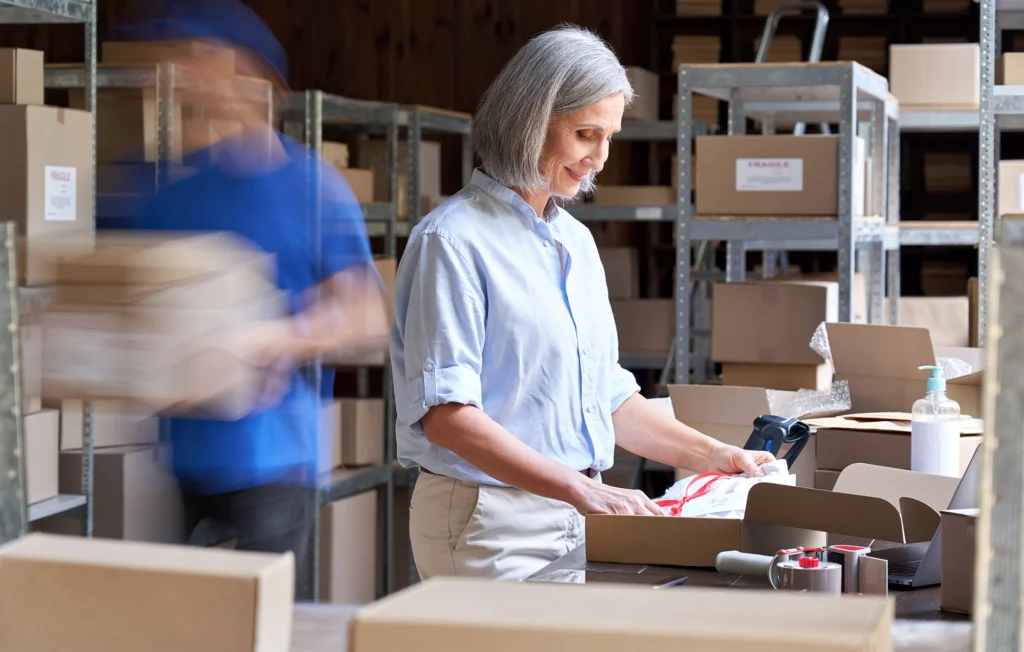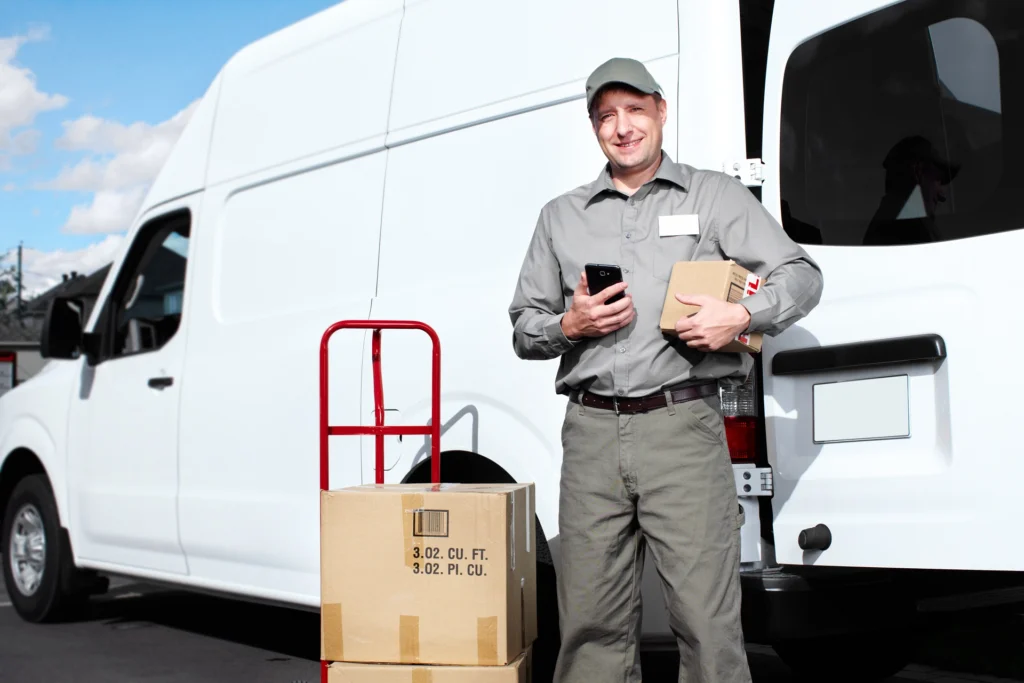How Micro-Fulfillment Centers Facilitate More Efficient Last-Mile Delivery

Wise Systems

Ensuring efficient delivery is one of the biggest challenges faced by e-commerce retailers. Today’s consumers expect their orders to be delivered quickly, often the next day, the same day, or even within hours.
More companies are establishing micro-fulfillment centers (MFCs) to meet this challenge and remain competitive in the fast-paced world of e-commerce. Micro-fulfillment is part of a broader trend in e-commerce and logistics towards decentralized distribution models, aiming to bring inventory closer to the customer to meet the growing expectation for fast, convenient delivery services.
This article explores how micro-fulfillment centers facilitate more efficient last-mile delivery to meet customers’ expectations.
In this article:
- What is a Micro-Fulfillment Center?
- How Micro-Fulfillment Centers Improve Last-Mile Delivery Efficiency
- Support Your Micro-Fulfillment Strategy with the Right Technology
- Frequently Asked Questions
What is a Micro-Fulfillment Center?

Micro-fulfillment centers are small-scale warehouse facilities located in urban areas or near residential neighborhoods.
Due to their small size, micro-fulfillment centers can be located in spaces that wouldn’t fit traditional warehouses, such as the back of a retail store or in an unused parking lot. Despite their size, they are highly efficient, often utilizing vertical space and automated technologies to maximize storage and streamline order processing.
The primary goal of micro-fulfillment centers is to fulfill online orders rapidly. They’re not designed for bulk storage but rather for quick turnover of goods. This makes them particularly useful for groceries, pharmaceuticals, and other fast-moving consumer goods.
For businesses, micro-fulfillment centers can lead to lower shipping costs, improved inventory management, and faster delivery times, which can enhance customer satisfaction. For customers, it means quicker receipt of goods, often with same-day or next-day delivery options.
How Micro-Fulfillment Centers Improve Last-Mile Delivery Efficiency
Micro-fulfillment centers help to address the challenges and costs associated with the final leg of the supply chain, when orders are delivered to customers’ doorsteps.
Let’s take a look at a few ways micro-fulfillment centers contribute to efficiency in last-mile delivery.
1. Strategic location
Micro-fulfillment centers are typically located closer to consumers, often in urban and suburban areas. This strategic placement significantly reduces the distance and time required for last-mile delivery. By shortening the distance between inventory and end customers, delivery vehicles can complete more deliveries in less time, improving overall efficiency and reducing carbon emissions.
2. Leveraging automation & robotics
Many micro-fulfillment centers utilize advanced automation and robotics to speed up the order fulfillment process. They use advanced systems like automated storage and retrieval, robotic pickers, and conveyor belts to speed up the picking and packing tasks, as well as sophisticated solutions like autonomous dispatch and routing to streamline and optimize dispatching and route planning processes. All of these tools allow micro-fulfillment centers to process orders and deliver them to customers’ doorsteps faster compared to traditional methods.
3. Optimizing inventory management

Micro-fulfillment centers often employ sophisticated software systems for inventory management, ensuring that popular items are always in stock and readily available for quick dispatch. This real-time inventory control helps avoid stockouts and delays, facilitating a smoother and faster last-mile delivery process.
4. Batching deliveries
Having micro-fulfillment centers located close to customers allows for the batching of deliveries, where multiple orders are delivered in a single trip. This approach not only makes deliveries more efficient but also reduces delivery costs. Batching is especially beneficial in areas with a high population density, where delivery locations are near one another.
5. Reducing delivery costs
By shortening the last-mile delivery distance, micro-fulfillment centers help reduce fuel consumption and wear and tear on delivery vehicles. Lower delivery costs can also enable businesses to offer free or low-cost shipping options, enhancing customer satisfaction and giving companies an edge in the highly competitive e-commerce landscape.
6. Greater flexibility & scalability
MFCs can be scaled up or down based on demand fluctuations, allowing businesses to efficiently manage peak periods without overburdening the last-mile delivery network. This adaptable approach allows delivery capacity to be optimized, preventing any bottlenecks or delays.
7. Integration with local delivery networks

Micro-fulfillment centers can easily integrate with local courier services, bike delivery fleets, and even drones for urban deliveries. This allows for a variety of delivery options, making the last-mile delivery process even more flexible and efficient.
Support Your Micro-Fulfillment Strategy with the Right Technology
Autonomous routing and dispatching is not only necessary, but is the future for many last-mile operations. Learn where your last-mile operations are today and make your AD&R plan. https://t.co/s5fAP9Ms4M pic.twitter.com/DK5fLF2Juq
— Wise Systems (@goWiseSystems) April 24, 2023
By bringing inventory closer to the end consumer and leveraging technology and strategic operations to streamline the last-mile delivery process, micro-fulfillment centers make last-mile delivery more efficient and help businesses meet the growing consumer demand for quick, reliable, and cost-effective deliveries.
Leveraging the right technology is crucial for micro-fulfillment centers. For example, many micro-fulfillment centers employ advanced technology like the Wise Systems delivery automation platform, a suite of solutions powered by an AI-driven Dynamic Optimization Engine (DOE). The platform offers powerful tools for optimizing last-mile delivery while also reducing costs, from dispatch to route optimization, performance management, customer communication, strategic planning, and more.
Request a demo today to learn how Wise Systems can support your micro-fulfillment strategy and streamline your last-mile delivery operations.
Frequently Asked Questions
What is the difference between a warehouse and a fulfillment center?
A warehouse is primarily used for storing goods over a longer period, serving as a central storage location. It focuses on the safekeeping of products until they are needed for distribution or sale.
A fulfillment center, on the other hand, is a type of warehouse designed specifically for order fulfillment—receiving, processing, and shipping orders directly to customers. Fulfillment centers are more dynamic, with goods constantly moving in and out to ensure quick delivery to consumers.
How big is a micro fulfillment center?
A micro-fulfillment center is significantly smaller than traditional warehouses or fulfillment centers, typically ranging from 3,000 to 10,000 square feet, while a typical warehouse is between 10,000 and 25,000 square feet—some much larger.
The size of a micro-fulfillment center can vary based on the location and specific needs of the business, but the focus is on optimizing space and using automation to efficiently process online orders for rapid delivery.
Are micro fulfillment centers profitable?
Micro-fulfillment centers can be profitable, especially when they effectively reduce last-mile delivery costs and enhance customer satisfaction with faster delivery times. Their profitability hinges on factors like location, operational efficiency, automation level, and the ability to meet consumer demand for quick, convenient delivery.
By lowering overhead costs and improving the efficiency of online order fulfillment, micro-fulfillment centers can offer a competitive advantage and the potential for higher profit margins.
What are the benefits of micro fulfillment?
Micro-fulfillment offers several benefits. The most significant benefit is their proximity to customers, which allows for quicker, same-day deliveries, and the shorter distance also translates to lower delivery costs.
Fast delivery and accurate order fulfillment lead to happier customers. Shorter delivery routes and efficient operations can contribute to lower carbon emissions, which also appeals to a growing number of consumers.

